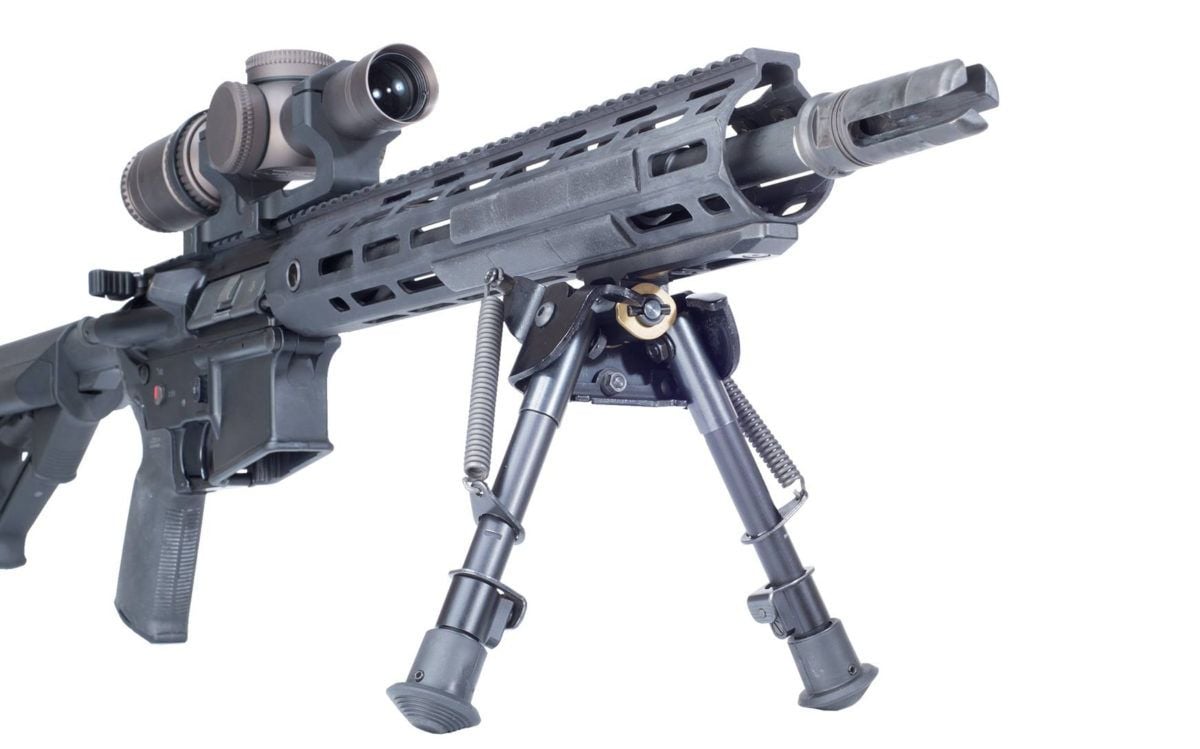
What are the purpose of AR-15 bipods, and should you run one on your AR? To get an answer to this common question, and go over some of the innovations Badger Ordnance has brought to the very popular Harris bipod, we reached out to Jordan Gerber, Badger Ordnance’s Military Programs Manager. Jordan has extensive experience shooting with a bipod and led the charge to improve and enhance this important firearm accessory.
Q: Jordan, we get a lot of questions about AR-15 bipods. In your experience, what goes into determining if you need a bipod on an AR?
Jordan Gerber, Badger Ordnance – If we’re talking about bipods from a military perspective, I think of it as role-based equipment. It all depends on what my role is and how I am going to deploy that weapon. If my role is to provide overwatch for an element or provide mid-range engagement capability, or if I am DM or a sniper within a team, that puts me within a different position than your average person inside of that patrol element.
If I am relegated to the task of being the eyes and ears of an element, and I am needed to make mid to long-range precision shots, I need to have something on my rifle that can enhance my ability…and a good bipod certainly does that.
If I have an element that is moving forward to do recon, and my task is to overwatch them, there is a lot of responsibility in that role. I don’t want to just be holding the rifle or putting it on a butt-pack. Rather, I want to have the most stable platform I possibly can. AR-15 bipods provide that.
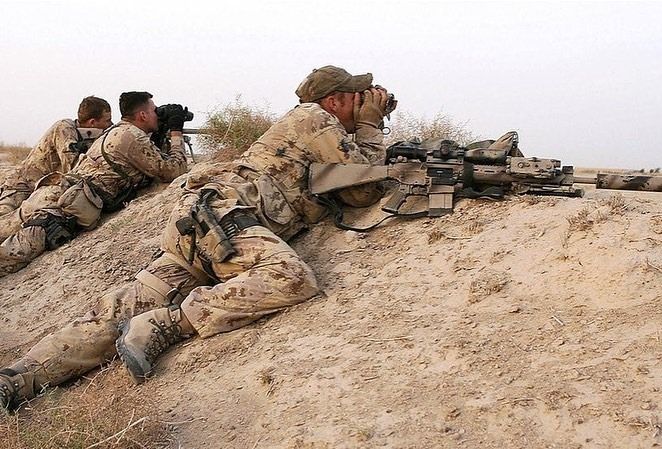
Q: Can you briefly explain the reason behind a bipod?
Jordan Gerber, Badger Ordnance – Well, our bipods that we make are ideal for a precision AR. You simply do not have a precision rifle if you do not have some sort of support. The bipod is that support for me in my shooting. It’s important to know that the bipod isn’t just for prone shooting. That’s not how bipods are strictly utilized anymore. They’re also used for barricade shooting, for example. Sitting, kneeling, standing…if I want to brace into something like a wall or a window, a bipod greatly enhances that ability. I can have two points of contact quickly come out that I can brace into, and stabilize the weapon and better make mid-range shots.
Q: Can you talk specifically about how you used a bipod and how it helped you?
Jordan Gerber, Badger Ordnance – The place I formerly worked at in the military, the shooting that we did, was almost all active shooting. Hardly any of it was in the prone. A lot of it was shooting off tripods, shooting off of barricades, and a lot of the bipods we were using were the Harris bipods. I think those are still a sturdy, viable bipod and are a good option, although they are not as feature-rich as some of the other bipods out there like the Atlas.
However, the positives of the Harris is it is still quick to deploy, it’s quick to adjust the leg height, and it has a good swivel feature, and a good lock feature if you are using something like the KMW Pod Locs, which is what we use at Badger Ordnance exclusively.
The problem we found with the Harris bipod was the attachment method. For decades, they have been attaching via a stud. It has a little grabber that attaches to a sling-swivel stud, and then a set screw that you tighten. This method of attachment was always a sticking point for me because, in my experience, it always eventually came loose…especially when doing barricade stuff. The other issue is that the attachment method is very weak. When you are barricading up against the wall, you have to realize that when kitted-up, guys weigh over 230 pounds…you’re putting a lot of ass on that weak little weld. I would routinely see them break with myself and my students.
When I was deployed, I would bring three or four of those bipods with me. This was because I just planned on them breaking. Because of that experience, when I got to Badger Ordnance, the bipod was one of the very first things I decided to work on. It’s the thing that I most wanted to do. A co-worker here had the same experiences I had, and together we decided we were going to make a stronger mount for the Harris bipod.
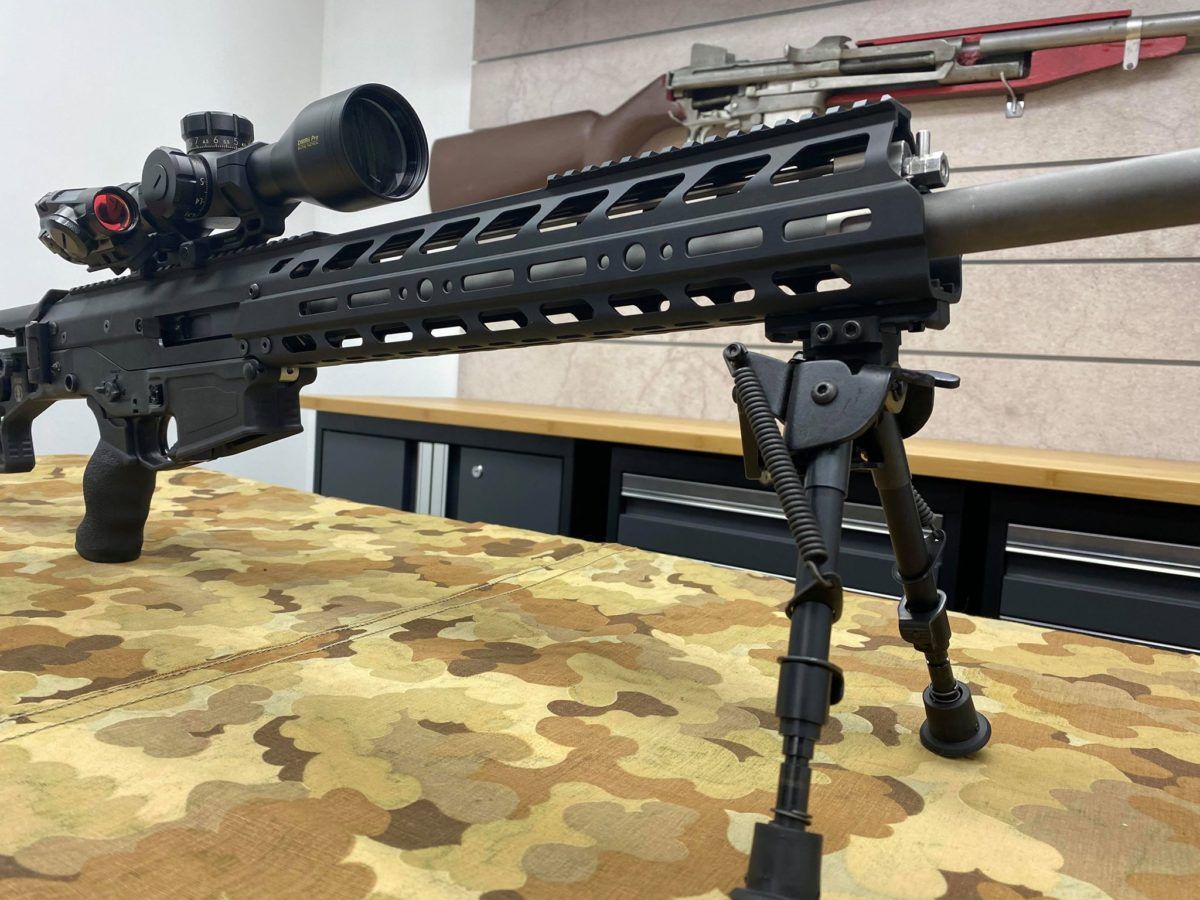
We drew up an idea where we discarded the Harris’s weak and clunky attachment assembly. We stripped it off, and then machined a replacement aluminum barrel that simply slips right back on the Harris and pins on. It’s a retrofit that takes about sixty seconds. It’s super quick. It ended up being both super strong and much more slim and streamlined. We really liked what we had created, had the thought we should make them commercially available in Picatinny and in M-Lok. The end result was the Badger LPHM kit, which stood for “Low Profile Harris Mount.”
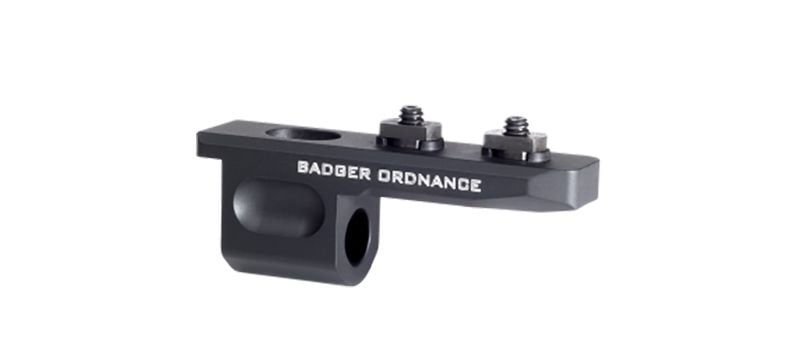
So, it came from a direct need, and we just made it happen here at the shop. I’d say to any of your readers out there who are running Harris bipods on their ARs, it is a kit that I think is the way to go. You can just buy the mount and quickly retrofit your existing Harris bipod. If you are not yet running a Harris bipod, we did make some other enhancements to the Harris bipod, and we sell that as a complete package that includes the LPHM and a modified Harris bipod together. As far as AR-15 bipods go, I think it is an ideal package to consider.
Q: Can you describe those enhancements to the Harris bipod that you offer at Badger Ordnance?
Jordan Gerber, Badger Ordnance – Simple things like the buttons that release the feet on the Harris bipod…they are located on the front, and this was a problem. When you are barricading into a wall or window, when you accidentally hit those buttons, the feet will deploy. You immediately go from having your standard 6” Harris bipod to having one side pop out and extend to 9”. When you then go to jump down into prone, it is something you have to quickly readjust. To make sure that did not happen, we had been making mods to the Harris bipod where we turned those buttons to face the inside. This worked well, and frankly, I felt like this is the way they should be situated. We were able to reach out to Harris and have them do this modification for us, from the factory. Today, they make this model specifically for us at Badger Ordnance.
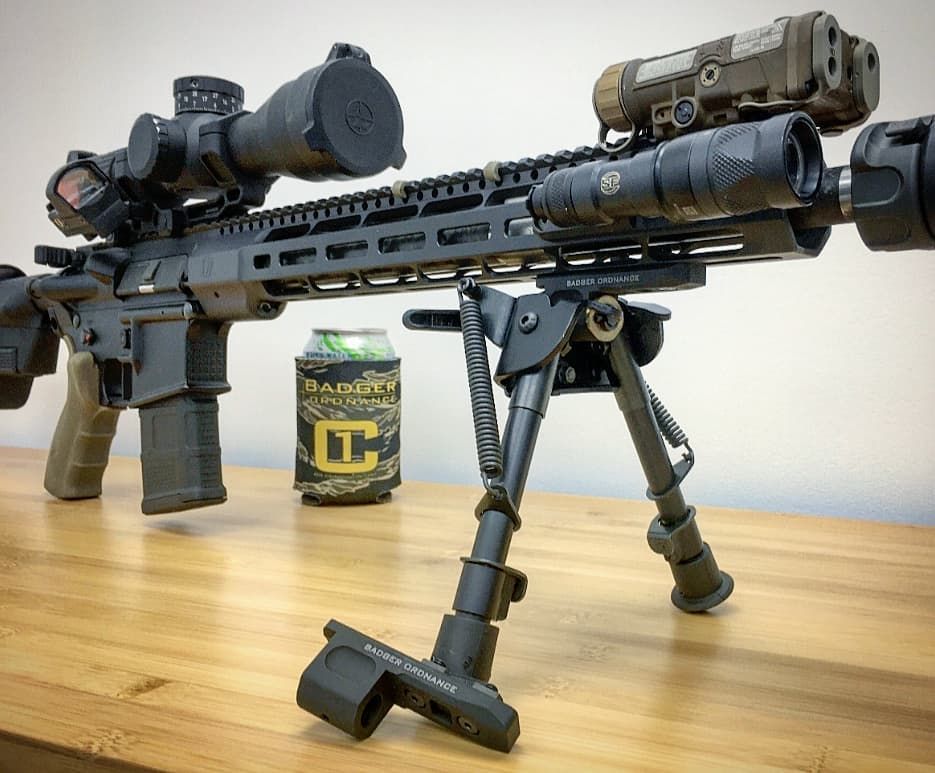
I think if you’re just starting out, and are researching AR-15 bipods, I’d definitely give us and what we offer a look. As far as your needs, it just all depends on what your role is and how you are likely going to need to employ your weapon.
For me, if I am getting off of a truck, doing operations inside of an urban theatre where my furthest engagement range is inside 200 meters, I might not need it, but if I am expanding that range, I would most certainly want to have access to one. The bottom line is this…what is your responsibility? The answer to that is really going to tell you what you should be attaching to your AR.
###
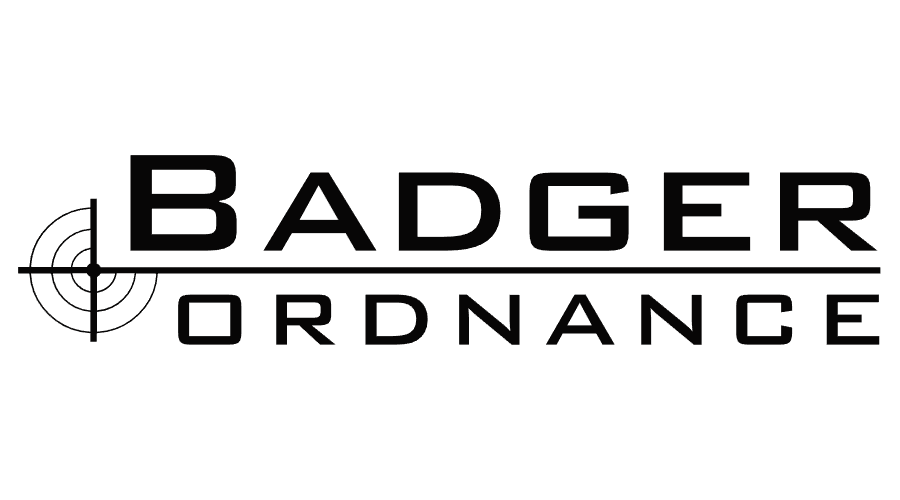



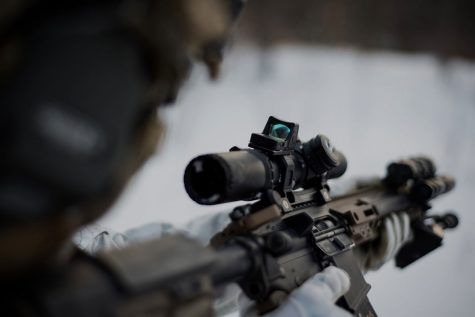
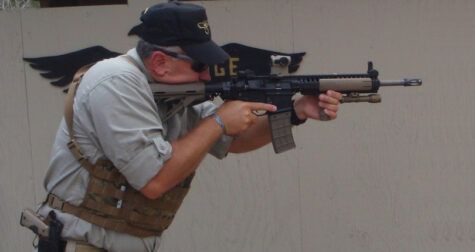
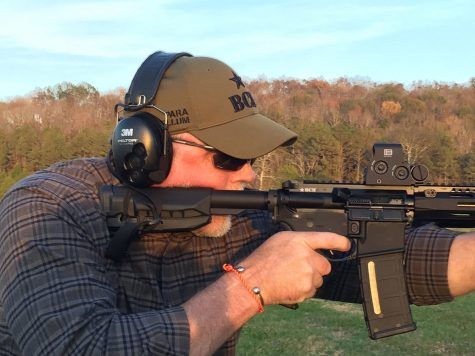
Will you give me precise instruction on what to purchase and how to install a harris bipod on a Christensen Arms CA9 with 16inch barrel. Can I buy all I need from you?